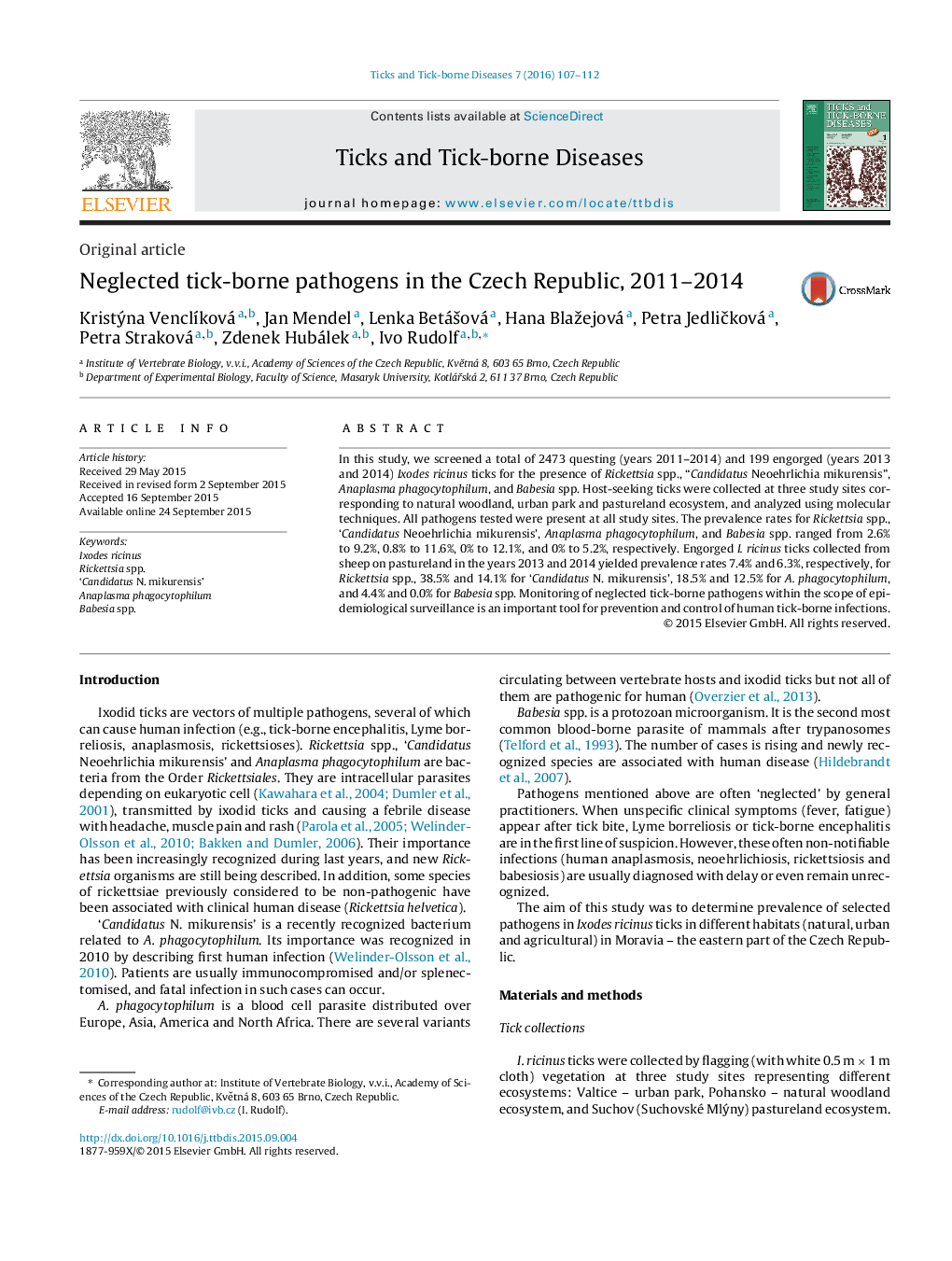| Article ID | Journal | Published Year | Pages | File Type |
|---|---|---|---|---|
| 5807017 | Ticks and Tick-borne Diseases | 2016 | 6 Pages |
Abstract
In this study, we screened a total of 2473 questing (years 2011-2014) and 199 engorged (years 2013 and 2014) Ixodes ricinus ticks for the presence of Rickettsia spp., “Candidatus Neoehrlichia mikurensis”, Anaplasma phagocytophilum, and Babesia spp. Host-seeking ticks were collected at three study sites corresponding to natural woodland, urban park and pastureland ecosystem, and analyzed using molecular techniques. All pathogens tested were present at all study sites. The prevalence rates for Rickettsia spp., 'Candidatus Neoehrlichia mikurensis', Anaplasma phagocytophilum, and Babesia spp. ranged from 2.6% to 9.2%, 0.8% to 11.6%, 0% to 12.1%, and 0% to 5.2%, respectively. Engorged I. ricinus ticks collected from sheep on pastureland in the years 2013 and 2014 yielded prevalence rates 7.4% and 6.3%, respectively, for Rickettsia spp., 38.5% and 14.1% for 'Candidatus N. mikurensis', 18.5% and 12.5% for A. phagocytophilum, and 4.4% and 0.0% for Babesia spp. Monitoring of neglected tick-borne pathogens within the scope of epidemiological surveillance is an important tool for prevention and control of human tick-borne infections.
Related Topics
Life Sciences
Agricultural and Biological Sciences
Animal Science and Zoology
Authors
Kristýna VenclÃková, Jan Mendel, Lenka BetáÅ¡ová, Hana Blažejová, Petra JedliÄková, Petra Straková, Zdenek Hubálek, Ivo Rudolf,
